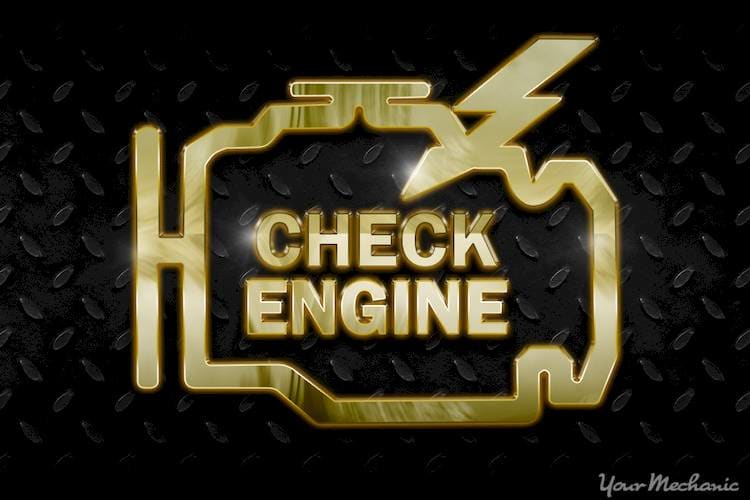P2274 code definition
O2 (Oxygen) Sensor Signal Stuck Lean Bank 1 Sensor 3
What the P2274 code means
This code definition indicates that either the oxygen sensor has failed, there is an exhaust leak before the sensor, or the engine has an intake manifold leak creating a lean combustion mixture.
What causes the P2274 code?
This code is caused by a failed oxygen sensor or the sensor is seeing an excessive amount of oxygen in the exhaust stream. As the name indicates, an oxygen sensor is measuring the amount of oxygen in the exhaust stream.
What are the symptoms of the P2274 code?
How does a mechanic diagnose the P2274 code?
After connecting a scanner to retrieve the code, the technician should study the engine data on the scanner. This code can be as simple as a bad O2 sensor or be the result of problems with the motor.
This is a downstream O2 sensor and is exclusively used to monitor the catalytic converter efficiency. Downstream O2 sensors are installed after the catalytic converter and upstream O2 sensors are installed before. Downstream O2 sensors should not oscillate like upstream O2’s. Their readings should be a relatively constant voltage.
If the vehicle runs good, has no other codes or signs of problems under the hood, the next thing to do is introduce propane into the intake or simply snap the throttle. Both of these actions will create a rich fuel mixture for a brief moment. Scan tool data for the affected O2 sensor should be monitored at the same time to observe the reaction, if any, from the O2 sensor. If the O2 sensor reacts quickly, it can be assumed the sensor is good and there is likely another problem contributing to this code. If the O2 does not react and the data does not show a voltage change, the O2 sensor should be changed.
Common mistakes when diagnosing the P2274 code
Usually when this code is set, the O2 sensor is bad. For this reason it is easy to fall on what is likely the problem and replace the O2 sensor without any other diagnosis. Most of the time this works, but sets us up for times when we have already quoted the cost to the customer but replacing the O2 sensor did not fix the problem.
With modern cars there are as many as six O2 sensors. Often times it can be difficult to determine which sensor this code points to. When this occurs, a mechanic may replace the wrong O2 sensor or find himself attempting to diagnose the wrong O2 sensor.
Finally, it is common for a mechanic to miss vacuum leaks or exhaust leaks that will affect the O2 sensor data. Vacuum leaks create lean conditions. Newer vehicles will have many systems that rely on the vacuum in the intake manifold. Not all these systems are under the hood. Often times vacuum hoses route under the dash or to the rear of the vehicle making it difficult to track down the source of a vacuum leak. Exhaust leaks actually draw in oxygen and taint the O2 sensors readings.
How serious is the P2274 code?
This code is usually a minor annoyance, depending on the source of the failure. If it isn’t corrected soon, it can cause some significant engine damage. A lean air fuel mixture can burn valves, cause overheating and damage cylinder walls and or pistons if left unrepaired.
What repairs can fix the P2274 code?
The most common repairs for an O2 sensor code are replacing the O2 sensor or repairing a vacuum leak in the intake manifold. Exhaust leaks are often a problem, but not as frequent as the O2 sensor itself and intake manifold leaks.
Some other possible component repairs are as follows:
Oxygen sensors should be considered maintenance items just like spark plugs. On average, an O2 sensor will last as much as 150,000 miles. Under certain circumstances, their lifespan will be greatly shortened. When undertaking repairs and or diagnosis of O2 sensors, the mileage of the vehicle should be taken into consideration. A technician will be quicker to replace an O2 sensor on older vehicles. Even if it isn’t a problem, just like your spark plugs, they will definitely be nearing the end of their lifespan. So the replacing of a suspected O2 sensor on a vehicle with an excess of 150,000 miles is good regardless if it is actually failing at that moment; it would be preventative maintenance.
Need help with a P2274 code?
YourMechanic offers certified mobile mechanics who will come to your home or office to diagnose and repair your vehicle. Get a quote and book an appointment online or speak to a service advisor at 1-800-701-6230.
Check Engine Light
oxygen sensors
trouble codes
P2274





